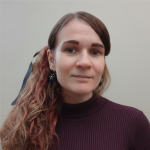
Understanding Nearshore Software Development: The What, How, and Where to Start
Contents
Contents
Intro
With rapid technological advancements and market requirements changing every year, organizations are increasingly looking for more efficient software development options. Outsourcing helps businesses significantly simplify work processes, save resources, and enter a large market much faster. In one of the earlier posts, we’ve already discussed why companies outsource in more detail.
The IT outsourcing market is projected to reach $541.10 billion in revenue in 2024 and a staggering $812.70 billion by 2029, with most revenue generated in the United States (Statista).
However, globalization’s intricate supply chains contain hidden vulnerabilities to large-scale disruptions like natural disasters, geopolitical uncertainties, and cyberattacks. Value chains are exposed to different shocks based on their geographic footprint and production factors, especially in high-trade-intensity industries. With the ongoing war in Ukraine and global geopolitical tensions, these risks persist. McKinsey’s 2023 Annual Supply Chain Pulse Survey found that two-thirds of respondents are now sourcing more inputs from suppliers closer to their production sites, doubling last year’s nearshoring score.
According to Glimpse, interest in “nearshoring” has increased by 192% over the past year. Nearshore development has become a popular solution for companies aiming to optimize their outsourcing strategy. In this article, we will take a closer look at the IT nearshoring model: what it entails, how it works, and where businesses can begin to leverage its advantages.
Location-based software outsourcing: A brief recap
When considering selecting one of the three forms of outsourcing, it’s crucial to understand the distinctions between offshoring, nearshoring, and onshoring. While all three involve hiring a third party to perform work for your company, grasping the main distinctions is key.
Offshore outsourcing
Offshore outsourcing involves hiring a skilled software development provider located outside of one’s geographical area, usually on other continents. For instance, if you are in the United States and your vendor or team resides in Europe or Asia. This option is the most efficient in terms of budget, but it also bears some trade-offs and hidden risks. The greatest challenges lie in the time zone and cultural differences, which can create barriers to communication and interactions with your existing team. At the same time, reliable service providers with established talent sourcing channels in popular offshore development regions can connect you with pre-vetted developers and build teams that are both effective and easy to manage.
Nearshore outsourcing
Nearshoring is the practice of a team extension or relocating your custom software development close to your home country to reduce costs or mitigate value chain risks. The inverse of offshoring, nearshore strategy involves choosing countries with similar time zones to ensure better coordination and communication. It’s best suited for projects that rely on real-time collaboration without needing face-to-face interaction. This model works well for ambiguous, strategic projects requiring real-time discovery and development of new software solutions at a more affordable cost. We’ll get back to the nearshore software development model in the paragraphs below (click any section in the contents to skip ahead).
Onshore outsourcing
Basically, onshoring means outsourcing projects to another city within your country. In most cases, it is the most expensive option compared to outsourcing abroad, especially for US companies. With onshoring, companies can leverage existing resources in different parts of the country without the extra overhead related to opening a new office, including real estate expenses and the cost of utilities, office setup, and maintenance. In this way, firms can tap into local talent markets, especially those with a high concentration of skilled professionals in specific fields, to fill talent gaps and meet project demands more effectively. Onshoring also allows businesses to keep projects within the same cultural, legal, and regulatory context, have immediate oversight over project processes, and easily conduct on-site visits and face-to-face meetings.
Here’s a TL;DR for you:
If a Swedish company outsources to Vietnam, it’s offshoring;
If a Swedish company outsources to Poland, Ukraine, or Bulgaria, it’s nearshoring;
If a Norrland-based company outsources to Linköping, it is onshoring.

A quick guide for choosing the right outsourcing model for your project
| Outsourcing type | Onshore | Nearshore | Offshore |
| Time zone | Same country as the client | Geographically close (1-4h time difference) | Overseas (5-12h difference) |
| Cultural affinity | Same culture | Similar cultures | Different cultures |
| Collaboration/language barriers | Same business hours and language(s) | Fewer barriers due to cultural proximity, possibly the same language area | Large time zone gap, possible cultural differences, and language barrier. However, English proficiency increasingly becomes a priority in countries like Vietnam |
| Relative cost | The most expensive | More budget-friendly than onsite/onshore; more expensive than offshoring | The most affordable |
| Quality | Local standard | Equal quality; greater quality/price ratio | Usually, lower than onshore; the compromise between quality and cost |
| Risks | Low | Low to medium, depending on the region | Medium to high, depending on the region |
| Talent | Limited talent pool | Access to more talent markets and service providers | Access to a vast talent pool in more locations |
| Project management | The most straightforward, within the same business context | Easier control and oversight due to similar work culture and proximity | Calls for considerate management due to distance and potential cultural barriers |
So, what exactly is nearshore software development?
Nearshore software development is a collaborative approach in which a customer partners with a service provider or a team of software development engineers from neighboring countries, typically within a one—to four-hour time zone difference.
World tech giants like Google, Apple, Microsoft, IBM, and Tesla outsource various functions across their supply chains to neighboring countries, setting an example for companies who consider nearshoring as a strategic way to enhance development efficiency and focus on their primary innovation goals.
How businesses can benefit from nearshore IT development
Nearshore software outsourcing is a feasible strategy for companies seeking to tap into a wider talent pool and expand their engineering capacity more quickly, with fewer cultural and regulatory barriers often associated with offshore outsourcing. Quality-wise, nearshore development is the second-best option after onshoring, and it is becoming increasingly popular among companies that want to hire a high-skilled team at a lower cost and acquire experts who are not too far away.
Access to a larger talent pool
Korn Ferry predicts that by 2030, the global talent shortage will result in around $8.5 trillion in lost annual revenues. Nearshoring tackles global talent shortages by providing access to a larger talent pool beyond a company’s immediate geographical location. By looking at neighboring or nearby countries, companies can acquire skilled professionals who may not be available locally.
Cost-effectiveness
67% of technology leaders say they are now expected to do more with smaller budgets than they were last year. Proximity between countries can lead to cost-effective labor opportunities compared to the company’s home country. That enables businesses to tap into a pool of skilled talent at a more affordable rate, thereby easing budget limitations linked to talent shortages.

Ease of collaboration
Nearshoring to countries in similar time zones facilitates real-time communication and collaboration. That helps minimize delays and makes managing projects and addressing issues easier, which is crucial when dealing with talent shortages and tight deadlines. Often, nearshoring involves countries with similar cultural and linguistic backgrounds, reducing potential misunderstandings and cultural divergence. This alignment can lead to more efficient teamwork and better project outcomes.
Flexibility and scalability
Nearshoring offers flexibility in scaling teams up or down as needed for projects, which is especially helpful for addressing changing talent needs without the long-term commitment of hiring in-house or permanent personnel. Nearshoring can also accelerate the hiring process by reducing administrative hurdles, especially if your development partner handles infrastructure and team management while you maintain control of your projects.
Mitigation of talent turnover risks
By diversifying the talent base across nearshore locations, companies can mitigate risks associated with local talent attrition (employee turnover). This attrition may include voluntary resignations and retirement, as well as be a result of layoffs or dismissals. High turnover rates can disrupt operations, cause the loss of domain knowledge and expertise, and increase the cost of hiring and training, posing a critical barrier for organizations to maintain effective management. In the event of a talent shortage in a specific region, the company can depend on its nearshore team to ensure continued operations and project consistency.

Diversity and impact
As Environmental, Social, and Governance (ESG) ambitions transition from being a reporting responsibility to a driver of value creation, fostering diversity has become a key focus for many organizations. Working with nearshore teams can provide a fresh perspective to your project. This approach not only addresses skill gaps that challenge many organizations by including candidates from nearby regions but also has a significant social impact by creating new jobs and perspectives in these countries. By bringing together diverse talents and integrating varied perspectives into project teams, nearshoring is a strategic way for companies to overcome the bottlenecks of culture, collaboration, and communication, ultimately leading to unique offerings for your customers and achieving the goals of digital transformation.
Nearshore software development: Where to start
If you are about to prepare to work with your first team of nearshore software developers, below are some proven tips for you to plan an effective nearshore strategy and set your project up for success. As with any other third-party collaboration, successful nearshoring depends on how well you understand your business needs and goals, how effectively they translate into project requirements, and what factors you consider when selecting a nearshore development partner.
Create a detailed project outline for your business case
Understanding the specifics of the project for nearshoring is crucial for selecting the best outsourcing strategy. Creating a project-specific business case detailing project scope, outsourcing options, key aspects, critical information, and necessary team and skills will guide your decision. If nearshoring is the preferred option, then the next step will be to determine the best location.
Select the proper nearshoring location
To find the perfect location for nearshoring, you need a comprehensive understanding of the social, business, tech, and political landscape, as well as in-depth knowledge of local markets. Analyze the countries you plan to nearshore to, including an overview of the ICT markets and average software development costs in each location, including estimated data from tech vendors, if available. Besides gathering IT market statistics and evaluating the pros and cons of each country, consider other conditions that could impact the development process: local taxes, employment laws, workplace customs, and holiday calendars. This research will provide valuable insights into target markets and better prepare you for cooperation with local tech experts and selecting the right software development partner.

Shortlist an experienced nearshore software development partner
When selecting a tech service provider from a specific location, consider these key factors:
- Number of skilled software engineers and domain experts;
- Years in the market and, particularly, experience in nearshoring;
- Areas of specialization;
- Track record of long-term partnerships with enterprise-level clients;
- Relevant expertise in similar projects and technology;
- Available nearshoring locations;
- Previous and current clients;
- Partnerships and certifications from tech companies;
- Pricing, cooperation, and engagement models;
- Market position and reputation;
- Employee feedback and reviews;
- Participation in global tech events.
Still, to paint a fuller picture beyond statistics and fancy numbers, we recommend you dive deeper into exploring the shortlisted vendors’ culture, values, team composition, and approaches. Does team culture matter to them? How do they treat their employees? Do they have a purpose beyond profit? What about a sustainable culture of operational excellence? Finding answers to these and other questions will help you take a more holistic approach to finding a suitable tech vendor and increase your chances for a perfect match.
Build your nearshore development team with a partner you can trust
The significance of nearshoring is expanding from simple “cost-cutting” to a more value-driven and strategic approach. It not only helps companies diversify and secure their value chains in the face of disruptions but also addresses talent gaps across industries without compromising service quality. Nearshoring also has a significant social impact, aligning with the increasing attention to ESG and sustainability goals. On the one hand, with this model, your business can scale up or down according to the changing needs and market requirements. On the other hand, it enables the engagement of people with different backgrounds, skills, and perspectives to project work, fostering diversity and innovation and allowing the creation of solutions that will benefit many.
As a tech ecosystem, Beetroot unites several companies and development houses to create a positive impact at scale through software development and tech education. Originating in Sweden, we offer multiple R&D locations in Poland, Ukraine, and Bulgaria— some of the most popular European nearshoring (and offshoring) destinations, and Vietnam— an excellent choice in terms of quality/price ratio. With the trust of over 200 customers worldwide, we’ve established our reputation as a reliable partner for building software development teams and impactful tech solutions. If you’re interested in discussing potential future cooperation, this is the perfect time to connect and see how Beetroot can help your business.
Subscribe to blog updates
Get the best new articles in your inbox. Get the lastest content first.
Recent articles from our magazine
Contact Us
Find out how we can help extend your tech team for sustainable growth.






